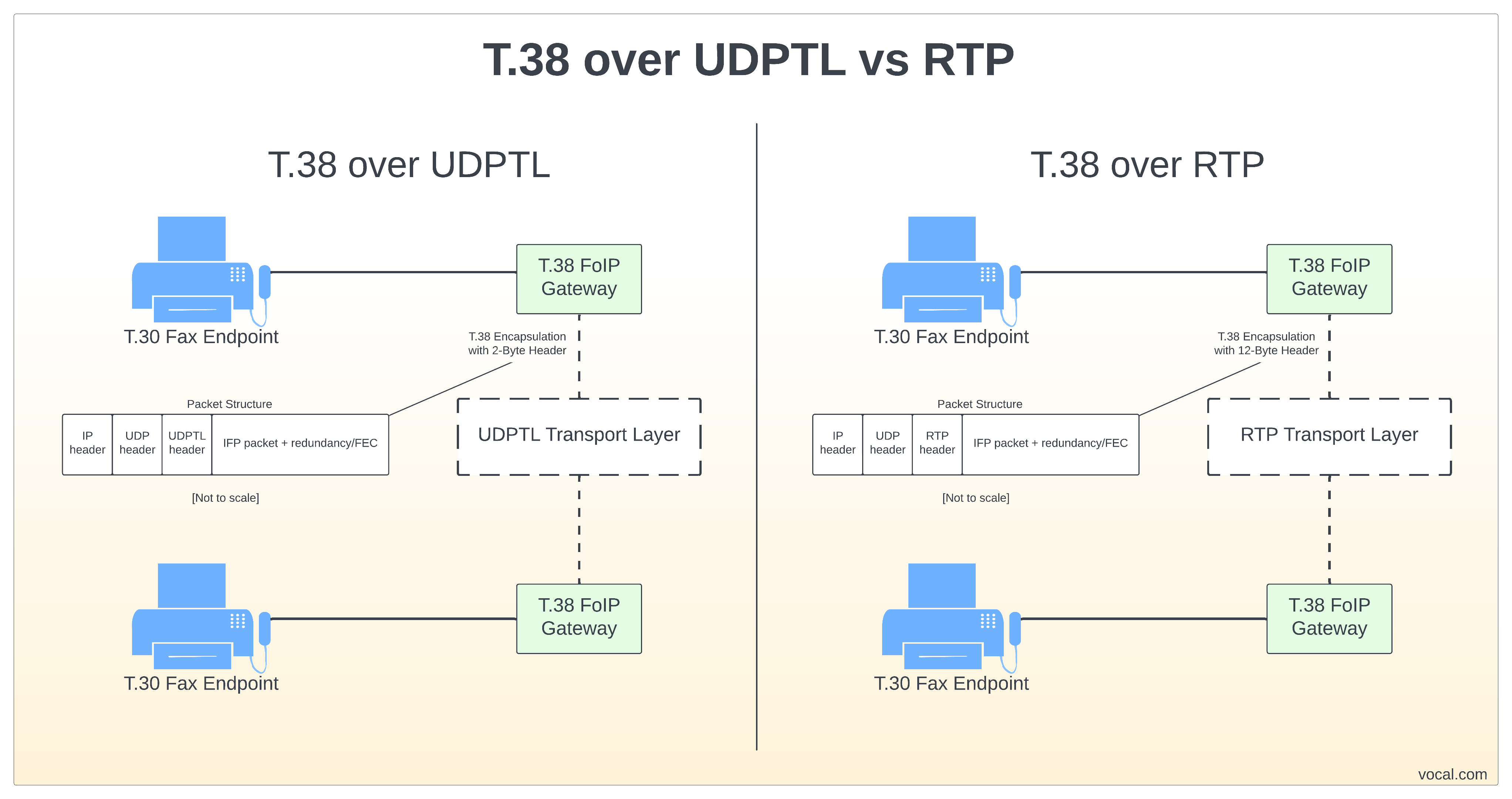Although T.38 Transmission Over UDPTL or RTP are used in a very similar manner, each one has its advantages over the other. The ITU standard for real-time facsimile over the IP network, T.38, provides two UDP-based means for transporting its data: UDPTL and RTP.
One benefit of using UDPTL is that it is more widely used for T.38 transmission than RTP, due to the simplicity of its implementation. Another benefit is that the packet overhead is lower. A UDPTL packet only requires 2 bytes per header, while RTP requires 12 bytes for its basic header. Due to the similar usage of UDPTL and RTP, there is no difference in quality of service between the two protocols other than overhead. However, RTP provides additional features that may be beneficial in certain situations.
While T.38 transmission over UDPTL is simple and efficient, RTP can provide additional features. The basic RTP can be extended through the use of application profiles. One such example is Secure RTP (SRTP), which can provide confidentiality and integrity for the RTP payload. The use of RTP also allows redundant packets to be sent as a separate stream, although this will increase overhead slightly. In network devices such as firewalls and gateways, RTP is more commonly supported and may provide better interoperability. RTP can also take advantage of header compression to reduce overhead. The use of RTP allows switching between audio and fax data within the same media stream simply by changing the payload type as well.
In conclusion, unless the additional features provided by RTP are required, it is preferable to use UDPTL for the transmission of T.38 data.

VOCAL’s solution is available for the above platforms. Please contact us for specific supported platforms.
